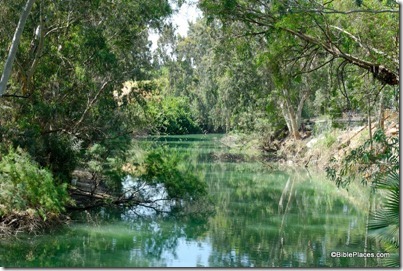When I taught in Israel, the faculty was split on the question of whether the Promised Land includes territory on the east side of the Jordan River or not. None of us questioned whether or not God had promised to give the land of Canaan on the west side of the Jordan River to Abraham and his descendants, but we could not agree on whether the land given to Reuben, Gad, and half of Manasseh should be considered to be in the Promised Land or not.
Today I will present the affirmative side of the debate. Those who believe in a literal fulfillment of Old Testament prophecies will recognize the potential ramifications of this issue.
1. The “land of the Amorites” was included in the original promise (Gen 15:21), and Sihon, king of the Amorites, lived in Transjordan (Josh 12:6).
2. There are specific statements by God that the land inhabited by the Amorite kings in Transjordan would be given to Israel (cf. also Deut 2:12, 24; 3:2, 18).
- Deut 2:31. “The Lord said to me, ‘Behold, I have begun to give Sihon and his land over to you; begin to take possession, that you may occupy his land.’”
- Psalm 136:19-22. “…who slew famous kings…Sihon…and Og…and gave their land as a heritage… to Israel His servant.”
3. By the command of God, cities of refuge and Levitical cities were established east of the Jordan (Num 35; Josh 20, 21). Ten of the forty-eight Levitical cites were in Transjordan. The Levitical cities are on both sides of the Jordan in accordance with divine proscription, impossible if Transjordan territory is not included in the inheritance of Israel.
4. Numbers 34, which designates the Jordan River as the eastern boundary, in context, must specifically refer to the land that yet remained unconquered in Cisjordan. Note especially Numbers 34:2, 13-15. In this passage Moses clearly states that Reuben, Gad and half of Manasseh already have their inheritance east of the Jordan. The remaining territory, the Land of Canaan, west of the Jordan, was yet to be divided up by lot to the other nine and a half tribes.
5. Israel could expand the promise to the point that more cities could be added (Deut 19:8-10).
6. The land that Moses “gave” on the other side was “acquired in accordance with the command of the Lord” (Josh 22:4-5, 9).
7. Manasseh’s “inheritance” is east of the Jordan. This is the same term used for the other tribes (Josh 13:8ff; cf. Judg 11:23-24).
8. A prophecy of the end times speaks of Israel’s presence in Transjordan: The Israelites “will lay hands on Edom and Moab and the Ammonites will be subject to them” (Isa 11:14; cf. Ezek 25:4-14).
The eminent geographer Barry Beitzel is one who holds a view similar to that presented here (The New Moody Atlas of the Bible, 26-29). Tomorrow I will present the arguments for my view.
